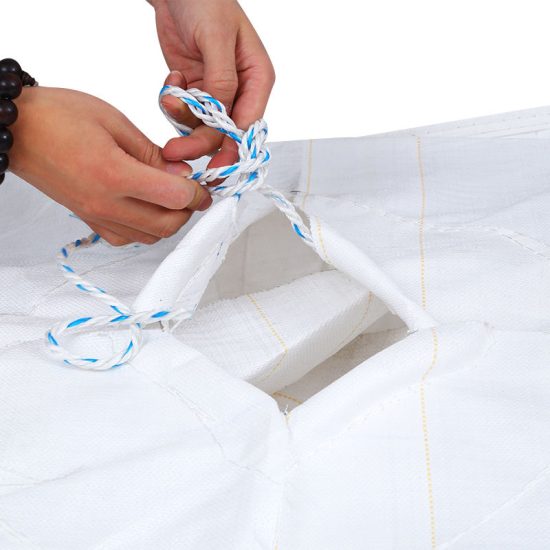Proper storage and maintenance of jumbo bags (FIBCs) are essential to ensure their longevity and to maintain their functionality for safe material handling. Here are some guidelines to follow:
- Storage Environment: Store jumbo bags in a clean, dry, and well-ventilated area. Avoid exposure to direct sunlight, extreme temperatures, humidity, and moisture, as these can degrade the bag’s material and compromise its strength and integrity.
- Protection from Contaminants: Keep jumbo bags away from chemicals, oils, solvents, sharp objects, and potential sources of contamination. Store them in an area that is free from pests, rodents, and insects to prevent damage and contamination.
- Stacking: When stacking jumbo bags, ensure that they are stacked properly to prevent excessive pressure on the bottom bags. Use pallets or platforms to provide a stable and even surface for stacking. Avoid stacking bags too high to prevent the risk of toppling or damage.
- Inspection: Regularly inspect stored jumbo bags for any signs of damage, such as tears, punctures, fraying, or weakened seams. If any damage is detected, remove the damaged bags from service to prevent potential failures during material handling.
- Cleaning: Clean jumbo bags as necessary to remove any dirt, dust, or residue that may have accumulated during use or storage. Use a soft brush or compressed air to remove loose debris. Avoid using harsh cleaning agents or abrasive materials that could damage the bag’s fabric.
- Repair or Replacement: If minor damage is detected, such as small tears or loose threads, repair the bag promptly using suitable methods, such as patching or stitching. However, if the damage is extensive or compromises the bag’s structural integrity, it is recommended to replace the bag to ensure safe handling and transportation of materials.
- Handling and Lifting: Follow proper handling and lifting procedures when using jumbo bags. Avoid dragging bags on rough surfaces or sharp edges that could cause abrasion or damage. Utilize lifting loops or handles designed for the bags to prevent overstressing the fabric and ensure safe lifting and movement.
- Training and Guidelines: Provide proper training to employees involved in the handling and maintenance of jumbo bags. Develop guidelines or standard operating procedures (SOPs) that outline best practices for storage, handling, and maintenance to ensure consistency and adherence to safety protocols.
- Rotation: If jumbo bags are used for multiple shipments or materials, implement a rotation system to ensure the even wear and distribution of load among bags. Regularly assess the condition of each bag and retire older or more damaged bags from service to maintain a reliable inventory of bags in good condition.
By following these storage and maintenance practices, you can prolong the life of jumbo bags, maintain their performance, and ensure their safe use for material handling. Regular inspections, proper cleaning, and timely repair or replacement of damaged bags are crucial steps to maintain their integrity and reliability.


